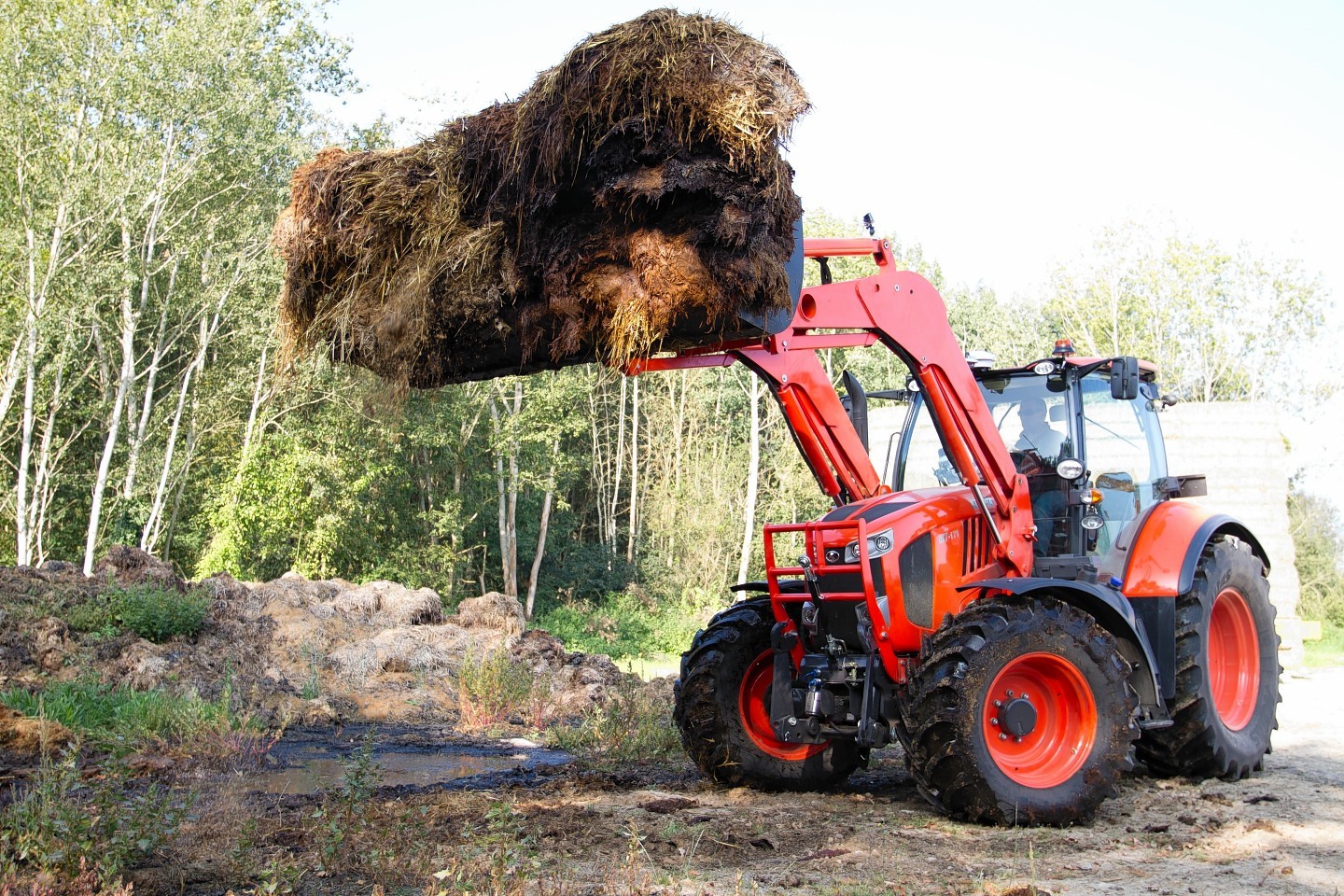Mention Kubota tractors and most minds will turn to the Japanese manufacturer’s long-established range of small utility machines.
Highly regarded by groundsmen and park keepers these little bright orange workhorses have a good degree of comfort and sophistication and comfortable cabs but now the company has undertaken a highly ambitious move aimed at translating these qualities into mainstream agricultural machines.
The first steps into this highly competitive sector saw the launch of mid-range Kubotas designed specifically for livestock and mixed farms. A good integrated front loader was a big selling point for tractors that were expected to be jacks-of-all-trades.
Now, having gained a bit of confidence, the company has taken the bold step of moving right into the mainstream 130 to 170hp sector by launching its M7001 range. Unveiled at LAMMA – the UK’s largest farm machinery show – in January the tractors are due to be released to market next month.
The M7001 range of 130, 150 and 170hp models are to be manufactured at a Kubota plant in Dunkirk so they only have to travel across the Channel rather than half way round the world. The fact that the tractors will be built in France should help give farmers confidence that these are tractors designed to meet European specifications.
They are, after all, entering the most competitive marketplace in the world with European farmers and drivers used to the best and unwilling to compromise. It is essential that the new Kubotas have the strength and ability to carry out a wide range of tasks such as ploughing, cultivating and drilling duties, on both mixed and arable farms.
The companies front loader credentials haven’t been forgotten either with a single lever hydraulic quick coupler allowing four hoses to be attached simultaneously. Kubota also claims easy attachment and detachment of the loader thanks to robust boom stands and only two mounting pins. Coming from a generation that associates attaching front loaders with much grunting and the liberal use of levers and hammers this sounds too good to be true but I am willing to take Kubota’s word for it.
Most of the focus in this size range will however be firmly on arable use and here the specification looks good. All three models are powered by four valve per cylinder four pot engines of a generous 6124cc capacity. These are modern common rail diesel injection units which use AdBlue, diesel particulate filtration and exhaust gas circulation, to help keep the atmosphere clean. Kubota engineers proudly proclaim that Stage 4 emission regulations are not only met but “dramatically exceeded.” The fuel tank holds 330 litres and the AdBlue tank 38 litres so there should be no need for mid-shift refuelling.
A good power plant is of course no use without an efficient means of transmitting the horsepower to the wheels and here there is a choice of a 24×24 powershift or full CVT transmission with maximum speeds of either 40 or 50 kilometres per hour.
Other options include a 24-speed semi-powershift or the Kubota K-VT transmissions, an auto function and custom setting for fieldwork, as well as the incorporation of a 12in touch-screen, specially programmed to handle the tractor’s main functions including transmission, linkage and hydraulic settings. Autosteer and headland management systems are also available.
Essentially the M7001 tractors are available in Premium or Standard specification. Both offer multi-function control levers with the Premium version offering just that touch more convenience and electronic spools. There are other differences too with the Premium spec, including 110 litre per minute Closed Centre Load Sensing hydraulics as opposed to the Standard models still adequate 85 litres per minute delivered by a an open centre system. All of the tractors have a very adequate 9000kg lift capacity – even a heavily laden one-pass seeder should pose no problem.
The cab hasn’t been forgotten with the M7001’s four-pillar design providing excellent driver visibility and the opening roof window allows the operator that often elusive full view of loader attachments when at full height. Kubota’s Kubota Care package will also be another top priority for the company in 2015. The extended warranty package was first launched in 2014 to provide its customers with a five-year after sales service package and it is reported as remaining a key focus for the company this year.
The scheme is eligible to all new buyers of the M Series range of tractors, and customers can specify the service hour usage most appropriate to them across the five-year term, whether that be 2,000, 3,000, 4,000, or 5,000 hours.
Kubota is targeting sales figures of 3,000 in Europe by 2017 as part of its plan to strengthen its position within the mainstream agricultural tractor market. To put that in context for 2013, the last year for which full statistics are available the UK market for wheeled tractors of all sizes was 13,500 units and Kubota’s share was 4.7% or 615 units.
